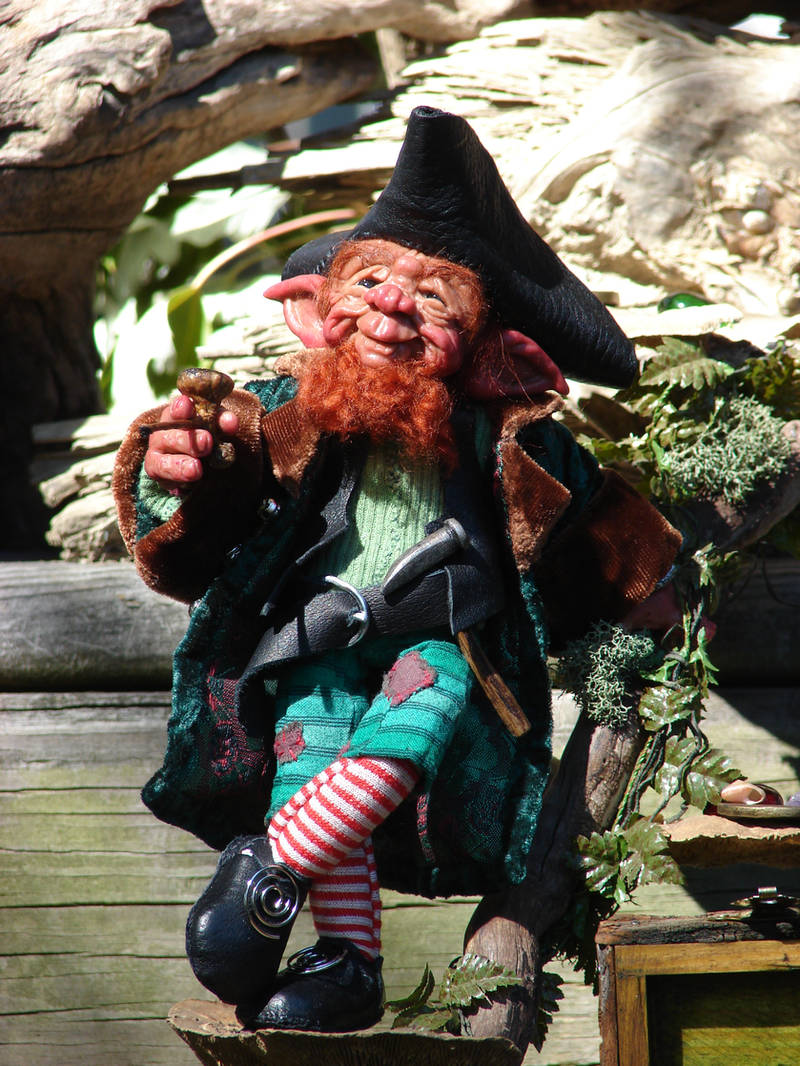Table of Content
1. Introduction
In the world of folklore and mythology, few creatures capture the imagination quite like leprechauns. These mischievous, tiny beings clad in green have become iconic figures, especially around St. Patrick's Day. But, are leprechauns real, or are they merely products of human imagination?
From their leprechaun origins in Irish mythology to their modern-day appearances in pop culture, leprechauns are more than playful figures associated with pots of gold and rainbows. Let’s delve into their fascinating history, explore popular beliefs, and answer the question: Are leprechauns real?
2. What are Leprechauns?

Leprechauns are mythical, human-like creatures from Irish folklore, often depicted as small, bearded men dressed in green suits, buckled shoes, and tall hats. These creatures are known for their mischievous nature and role as protectors of hidden pots of gold at the end of rainbows.
Modern pop culture often surrounds them with luck symbols, such as four-leaf clovers and rainbows, making them central figures in St. Patrick's Day celebrations. However, the real story of leprechauns runs much deeper, rooted in the rich traditions of Irish mythology.
3. What is the story behind the leprechaun?
3.1 Name Origin and Shoemaking Connection

Over time, it evolved into leipreachán, signifying the whimsical identity of these mythical. The term "leprechaun" originates from the Irish word luchorpán, meaning "small body", later evolving into leipreachán. This linguistic evolution reflects the whimsical identity of these mythical beings. Some also suggest the name stems from leith bhrogan, translating to "shoemaker," emphasizing their role in Irish folklore as skilled cobblers. Legends describe them as solitary figures, tirelessly hammering away on tiny shoes—an activity often associated with the rhythmic sound that signals their presence.
According to Irish mythology, leprechauns are believed to be descendants of the Tuatha Dé Danann. This supernatural race inhabited Ireland before humans. This mystical lineage connects them to Ireland’s ancient gods and spirits, further cementing their cultural significance. Over time, their cobbling craftsmanship and mythical origins have combined to create the resourceful, mischievous figures we recognize today.
3.2 When is Leprechaun Day?

Beyond their association with St. Patrick’s Day, leprechauns have a day dedicated entirely to their mischievous charm—Leprechaun Day, celebrated annually on May 13th. While not as widely recognized as its green-clad counterpart, this whimsical occasion encourages enthusiasts to embrace the playful spirit of these mythical beings.
From crafting leprechaun traps to sharing enchanting tales, Leprechaun Day offers a delightful chance to explore Irish folklore in a lighthearted and creative way. Whether donning green attire or hosting a themed celebration, this lesser-known holiday invites us all to revel in the magic and mystery that leprechauns bring to life.
4. Are Leprechauns real?

In our humble opinion, the answer to the “are Leprechauns real?” question is a definite "nope." Leprechauns aren't real; they're just these cute, made-up characters we all love to associate with the lively celebration of St. Patrick's Day.
But you know what's even more important than whether you believe in these little guys? It's about showing some love and respect for the awesome culture that dreamed them up.
According to Ninian Mellamphy, an English professor and Irish culture buff, it's way beyond leprechauns and the whole green vibe. In a chat with the Pepperdine University Graphic back in 2003, he spilled the tea, saying, "For the Irish, it’s much more than the leprechauns and green color. The real significance is the culture, rich in antiquity and layered with the customs of many different civilizations. Irish memory is very significant, and many Irish plays are centered around this theme, which can be much more interesting than leprechauns, fairy forts, and other mythical folklore people have used to explain the oddness of the relics of Ireland’s ancient civilizations."
And for those who might not be too hasty in waving off the notion that leprechauns might just be real, rest assured, you're not alone. According to a 2011 survey commissioned by an Irish whiskey brand and reported by Irish Central, a surprising one-third of Irish folks firmly believe in the existence of these mischievous little beings.
5. Evidence for the Existence of Leprechauns
Despite their long-standing presence in Irish folklore, there is no concrete evidence to prove the existence of leprechauns. However, there are some theories and supposed sightings that suggest otherwise.
5.1 Sightings and Folklore

Numerous reported sightings of leprechauns throughout history, particularly in Ireland. In 1989, a group of schoolchildren in County Louth claimed to have seen a leprechaun in the woods while on a field trip. They described it as a small, bearded man wearing a green suit and hat. The sighting gained national attention and sparked a debate about the existence of leprechauns.
In addition to sightings, many stories and legends surrounding leprechauns have been passed down through generations. These tales often depict leprechauns as mischievous creatures who use their cunning to outsmart humans. While these stories may not provide concrete evidence, they add to the intrigue and mystery surrounding leprechauns.
5.2 Folklore and Superstitions
In Irish leprechaun folklore, leprechauns were believed to possess magical powers and could grant wishes to those who captured them. This belief led to many superstitions, including leaving out milk or butter to appease leprechauns and ensure good luck. Their mischievous nature and association with their leprechaun pot of gold made them symbols of fortune and trickery. This mythical treasure is a hallmark of Irish leprechaun stories, symbolizing wealth and the cunning trickery needed to find it.

6. Fun Facts About Leprechauns: Myths and Realities
Despite lacking evidence, leprechauns have become ingrained in popular culture and are often associated with St. Patrick's Day celebrations. However, many common beliefs and depictions of leprechauns are based on myths and misconceptions.

- Leprechauns Are All Male: Contrary to popular belief, leprechauns aren’t exclusively male. Irish folklore includes female leprechauns, often called "leprechaunesses," who are just as cunning and mischievous as their male counterparts.
They’re Not Always Friendly: While modern portrayals show them as playful and harmless, traditional Irish tales depict leprechauns as quick-tempered tricksters who often outsmart humans in clever and sometimes harmful ways.
Origins Beyond St. Patrick’s Day: Leprechauns weren’t originally associated with St. Patrick’s Day. This connection only emerged in the 19th century when Irish immigrants in America tied them to the holiday through stories and festive celebrations.
Leprechaun Names: While leprechaun names vary, they’re often playful, reflecting their mischievous character. Examples include Lucky, Finn, and Seamus.
Musical Talents: Leprechauns are often depicted as master musicians, playing Irish instruments like the fiddle, tin whistle, and harp, bringing joy (or annoyance) to those who hear them.
Underwater Roots: Some early legends suggest leprechauns may have been aquatic creatures, with tales of them pulling a king into the sea hinting at their mythical underwater origins.
Chaotic Cousins: The clurichaun, a mischievous relative of the leprechaun, is infamous for drunken adventures, such as riding animals and raiding wine cellars, adding an extra layer of mischief to Irish folklore.
Protected Heritage: In 2009, leprechauns were granted heritage protection in Carlingford, Ireland, to preserve Irish cultural identity and folklore.
Creative Modern Traditions: Leprechauns have inspired fun modern-day activities, from children building “leprechaun traps” to themed marathons celebrating their magical legacy.
7. Conclusion
Leprechauns may not be real, but their magic is undeniable. From their origins in Irish folklore to their charm on St. Patrick’s Day, these mischievous figures remind us of the joy in storytelling and tradition. So, as you celebrate this year, please take a moment to appreciate the myths, the culture, and the fun they bring. After all, isn’t a little magic what makes life exciting?
Frequently Asked Questions
What is the origin of the leprechaun myth?
The origins of leprechauns can be traced back to Irish mythology, where they were believed to be descendants of the Tuatha Dé Danann.
How do you spell leprechaun?
The correct spelling is "leprechaun." It originates from the Irish word "luchorpán," meaning "small body." Remember, starting with "lepre-" can help you easily recall the correct spelling.
How tall are Leprechauns?
Leprechauns are typically described as being about 2 to 3 feet tall in Irish folklore. Their small stature is a defining characteristic, adding to their mischievous and elusive nature.
Why are Leprechauns associated with St. Patrick's Day?
Leprechauns became associated with St. Patrick's Day in the 19th century, thanks to the popularity of Irish fairy tales and legends.
Are there female Leprechauns?
Yes, in Irish folklore, there are female versions of leprechauns known as "leprechaunesses" or "leprechaun women."
What does a leprechaun look like?
Leprechauns are often depicted as small, bearded men dressed in green suits, buckled shoes, and tall hats. In older Irish tales, these mythical creatures are also known for their mischievous grins and occasional red attire
When is leprechaun day?
Leprechaun Day is celebrated annually on May 13th. This whimsical holiday honors the playful and mischievous spirit of leprechauns with storytelling, green-themed attire, and creative activities.











